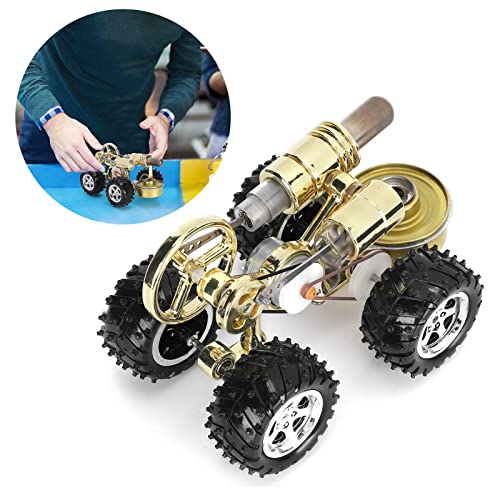- Joined
- Jun 24, 2010
- Messages
- 2,445
- Reaction score
- 969
I was having a discussion with a buddy about choices of bar stock aluminum for making (ringed) model engine pistons. Somewhere in my travels I assembled some notes of what others were using & why, but they seemed to have vaporized. His point was that you cant simply use alloy strength parameters which are referenced at ambient conditions because strength diminishes with increased temperature & differently among the alloys. Fair point. I did a quick forum search here, a few posts like below, maybe more orientated to casting material vs. bar stock.
https://www.homemodelenginemachinist.com/threads/aluminium-grade-for-pistons.33930/#post-375308
I started to Google what I thought would be straightforward Strength vs Temperature comparison of bar stock choices one typically sees referenced in model builds (at least in N-Am) 6061, 2024, 7075. I was hoping to stumble on a direct hit cross plot something like I've manually constructed in Excel from alloy specific sources, but no such luck. So take this chart as a guess for discussion purposes. Maybe you have better properties links & I will update as required. I'm suspicious of the 2024 data, I assumed better than 6061. Also recognizing that many commercial model engines are forged and from from their own alloy recipes, so even harder to comparatively evaluate. Here is as far as I got. 7075 looks the best but the question is what is the max operating temperature range where the values diverge? The top of piston will be the hottest, but it also cycling between strokes so maybe some average?
https://pdfs.semanticscholar.org/253b/e284d172b00d6d7ca21d64106a7154f94e89.pdfhttps://www.rolledalloys.ca/shared-content/technical-resources/datasheets/2024_DS_USA_English.pdfhttps://www.extreme-bolt.com/aluminum-7075-screws-bolts-nuts.html
https://www.homemodelenginemachinist.com/threads/aluminium-grade-for-pistons.33930/#post-375308
I started to Google what I thought would be straightforward Strength vs Temperature comparison of bar stock choices one typically sees referenced in model builds (at least in N-Am) 6061, 2024, 7075. I was hoping to stumble on a direct hit cross plot something like I've manually constructed in Excel from alloy specific sources, but no such luck. So take this chart as a guess for discussion purposes. Maybe you have better properties links & I will update as required. I'm suspicious of the 2024 data, I assumed better than 6061. Also recognizing that many commercial model engines are forged and from from their own alloy recipes, so even harder to comparatively evaluate. Here is as far as I got. 7075 looks the best but the question is what is the max operating temperature range where the values diverge? The top of piston will be the hottest, but it also cycling between strokes so maybe some average?
https://pdfs.semanticscholar.org/253b/e284d172b00d6d7ca21d64106a7154f94e89.pdfhttps://www.rolledalloys.ca/shared-content/technical-resources/datasheets/2024_DS_USA_English.pdfhttps://www.extreme-bolt.com/aluminum-7075-screws-bolts-nuts.html






















































![TurboCAD 2020 Designer [PC Download]](https://m.media-amazon.com/images/I/51UKfAHH1LL._SL500_.jpg)

![MeshMagic 3D Free 3D Modeling Software [Download]](https://m.media-amazon.com/images/I/B1U+p8ewjGS._SL500_.png)









![DreamPlan Home Design and Landscaping Software Free for Windows [PC Download]](https://m.media-amazon.com/images/I/51kvZH2dVLL._SL500_.jpg)













